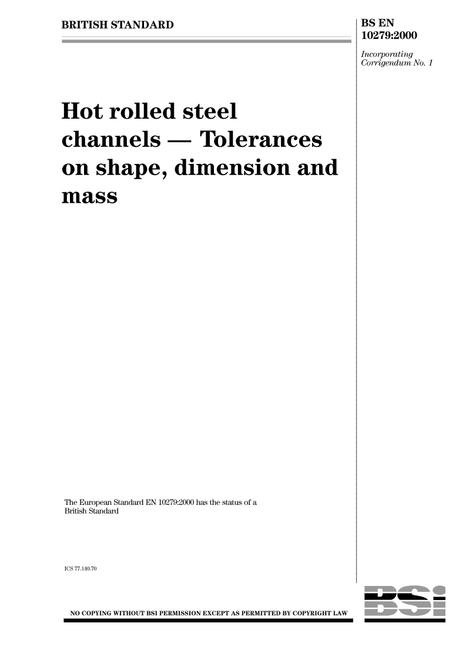Bs En 1090 2 Pdf Download
The Construction Products Regulations (CPR) were adopted in the UK in March 2011 to enforce the European Construction Products Directive. The aim of the directive is to harmonise the safety performance of construction products across the EU and they apply to anything placed on the market, whether imported or manufactured in the EU. The CPD defines six principles for materials that are to be used in civil engineering: • Mechanical resistance & stability • Safety in case of fire • Hygiene, health & the environment • Safety in use • Protection against noise • Energy economy & heat retention From July 1st 2014 any “series” manufactured structural metal components or kits that have been either made in the UK or imported, and to which a harmonised European standard applies, must comply with the CPR & CE marking requirements. The harmonised European standard that applies to structural metalwork is BS EN 1090-1:2009 and it is a criminal offence to supply structural metalwork after the 1st of July 2014 unless it conforms to this standard and carries a legitimate CE mark. New legislation introduced in 2013 allows the CPR to be enforced by the Trading Standards authority, which will have the power to stop a business from trading and to withdraw any products supplied after July 1st 2014, until the company has shown that it complies with the Regulations.
BS-EN-1090-2 - Ebook download as PDF File (.pdf) or read book online. Scribd is the world's largest social reading and publishing site. Search Search. Close suggestions. More From karfire1982.
This will be costly for businesses that are discovered not to be complying with CPR, as they will be unable to trade during the long period needed to implement BS EN 1090-1 (see below) and will have to carry the cost of product recalls and fines. In severe cases Directors may also be imprisoned. The regulations apply to a wide range of activities involving “series” manufactured items: • Importers of structural metalwork kits or components • Stockholders and metal processors that modify stock - for example by drilling, painting, bending, electroplating etc. • Manufacturers of metal components or kits that have a structural use in civil engineering. By “series”, the regulations mean any activity that an organisation carries out more than once, not just the production of a series of standard items. Download suara kenari juara. For example a factory that makes bespoke staircases is in the business of “series” manufacture of staircases and all of them will need to carry a CE mark. If the same factory produces a single platform as a special commission, this will be exempt.

However if the factory decides to diversify into platforms and makes more than one, CE marking will be required. Organisations covered by CPR will need to show that they comply with BS EN 1090-1, which involves a number of steps that culminate in certification by a third party, known as a notified inspection body (NB). In the UK all NBs must be accredited themselves by the United Kingdom Accreditation Service (UKAS), many of which are familiar as certifying ISO 9001, ISO 14001 and other international management standards. BS EN 1090-1 requires a number of actions to be in place, many of which will already be standard practise in well-run companies: • Purchasing systems will need to buy only CE Marked sections, bolts and welding consumables. • Designers will identify the execution class of the product, as defined in the companion standard BS EN 1091-2, which is determined by the potential risk to the public if the component or structure fails. The designers will also need well-defined specifications for components and kits. • Prototypes will be produced and subjected to initial type testing.
Where type testing is impractical, for example on bespoke designs, the company can use calculations to serve the same purpose. Type testing is used to define Key Control Checks. These are monitored within a quality control system, called Factory Production Control (FPC). The FPC system also covers design and drawing controls; competence and training of staff; equipment maintenance & calibration; control of non-conforming product & keeping of records. Where welding is part of the process, a Welding Quality Management system is needed and this must conform to BS EN ISO 3834. Kitobi sahehi buhori skachat.